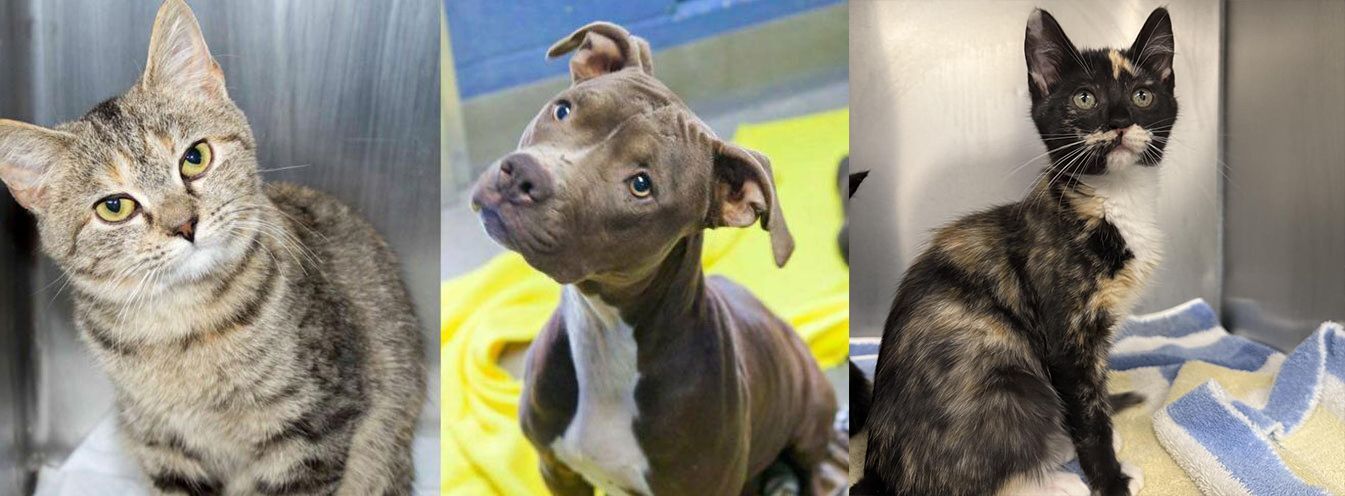
Mission Statement
Serving animals and people by engaging the hearts, hands, and minds of the community.
Vision
To compassionately and responsibly create a more humane world for animals.
Values
Educate: Promote responsible pet ownership through public awareness by harnessing the creativity and passion of people through collaboration and teamwork.
Refuge and Rescue: Provide a clean, healthy and caring environment, food, shelter and temporary housing for lost, stray and unwanted animals.
Rehome: Make every attempt to reunite animals with their families or to place them into loving homes.
How We Began
The Martinsville-Henry County SPCA was formed in 1974 by Alice Ann Blevins and Judy DeBusk, along with 29 other citizens. These early days saw animals being rehomed by way of a volunteer telephone adoption program. These founding members rotated weekly assignments, out of their own homes, matching animals to the best available homes. Committee members kept adoption files in shoe boxes.
The first building used to hold animals was found in 1988 and had limited space to house available cats only. The first shelter was purchased in 1992, and in 1994 the SPCA was accepted into the North Shore Animal League Puppy Adoption Program. Unfortunately, the shelter was prone to flooding from faulty drainage and poor ventilation. During this time euthanasia rates were very high.
In 2004, a capital campaign was started to fund a new shelter. The land was donated and a 9,500 square foot facility was built. The move was completed in January 2007. With that move the SPCA became a limited-intake, no-kill facility. In this new building the SPCA was able to start rehoming over 1,000 animals per year through local adoptions and transfers to other no-kill rescues, primarily through North Shore Animal League. During this time the SPCA offered a low-cost spay/neuter program for community members as a transport-based system eventually developing into a voucher program supported by local veterinary clinics. The SPCA supported a coordinator based at the Henry County pound to evaluate and facilitate the transfer of animals into our facility.
2013 kicked off a huge year for the SPCA as it started a campaign to become a No-Kill community by 2015. With a community euthanasia rate of 18% in 2012, the goal seemed attainable and by the end of 2013 our community euthanasia rate had dropped to 10.4%. Unfortunately, this number had been achieved by accepting every cat that was brought to the pound which was an unsustainable model. At one point during the summer of 2013 our SPCA shelter was housing over 170 cats and kittens, often using space that was designed for dogs and puppies.
In 2014, we took a smarter approach to rehoming animals, intaking animals, and promoting spay/neuter to combat overpopulation. The death rate for our community at that time was 16%. The SPCA achieved a No-Kill Community status in 2015. Since 2015, the death rate of the community has fluctuated above and below the 10% No-Kill requirement.
In 2019, the SPCA “graduated” from the North Shore Animal League Puppy Program, as a result of facilitating so many spay/neuter procedures that there were finally not enough puppies to transport! With that reduction in our local puppy population, the SPCA was merely serving as a transportation hub for other communities’ shelters that were not actively encouraging programs to reduce their local pet populations. The SPCA continued partnering with the local pounds to place adoptable animals into homes and rescues.
In 2021, multiple grants were received and generous personal donations were made to establish the Louise R. Lester Spay & Neuter Clinic within the SPCA. As a result of those fundraising efforts our SPCA outfitted a clinic, hired a veterinarian and two veterinary assistants to work 40 hours a week performing surgeries on shelter and public animals. With a veterinarian on staff, the SPCA has been able to take on additional medical care cases and hospitalize animals in the building when necessary.
Each year we continue to look for ways to improve prospects for our community’s cats and dogs.
